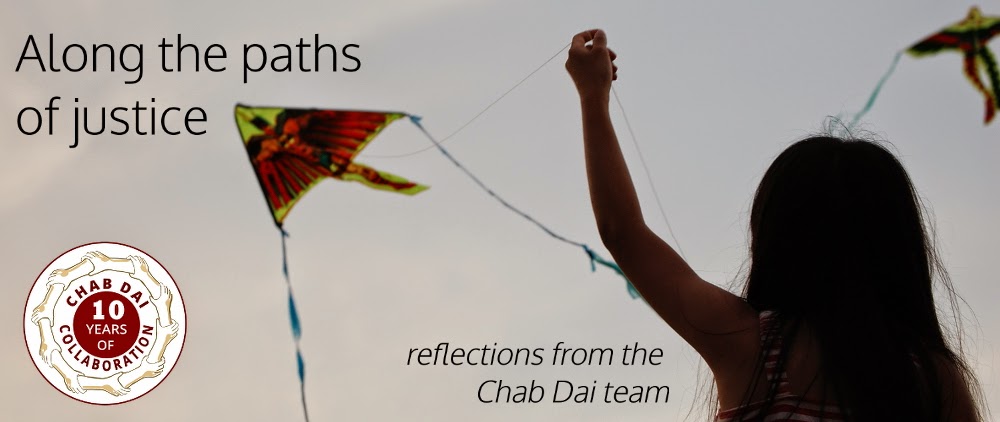
Have you ever faced the challenge of summarizing a very complex issue in a succinct yet engaging manner? I have. When I was visiting home recently, I was asked about my work in counter-trafficking and what is it that I do. I always appreciate these moments and try to share information on human trafficking and Chab Dai's work in raising the standards of care for vulnerable people and building collaboration. I can think of many examples, such as our support team working on cases of
forced marriage in China, the labor cases on Thai fishing boats or the thousands
of villagers and community leaders in Cambodia that are now educated on safe migration, human trafficking and/or parenting skills. But these opportunities are also challenging as I try to describe what I've been working on for the past couple of years; a process that has been so challenging and precious that it hard to put into words, let alone a 30 second response.
I found it hard to share these stories in a way that sums up the complexity of
these issues in a dignified and non-sensationalist manner. And the more I talk with my peers and colleagues about the reasons for this
struggle, the more I realize that others in the field are facing the same challenges. Rachel Kurzyp, the Communications Director at WhyDev, wrote in her blog post, NGOs Need to Tell Better Stories, "When I re-tell these stories and
others, I feel conflicted. I want the individuals within the stories to be
respected and have dignity. I don’t want them to be viewed as helpless and
weak. I try to make sense of their situation the best way I can. But I know the
supporters and donors don’t like to read stories without happy endings or
pieces that question the world’s inequality and their part in it."
There is almost always an expectation to hear an
emotionally charged story with a dramatic rescue and heroic finish. A call to action usually
comes through heart-wrenching images such as a powerless woman in a prison cell or a
child picking up rubbish at a garbage dump. However, such stories often fall
into a narrative of saviors and victims, glorifying images of rescuers
during brothel raids while other seemingly more mundane, but equally important, actions go unnoticed. This kind of "compassion" marketing oversimplifies and dilutes the stories of individuals who live in these
very complex sets of circumstances.
A proven risk of these "compassion" marketing campaigns is that they end up hurting the
very people they set out to help. Many of the people we see in the images and we hear telling their stories end up being re-traumatized from the constant
re-living of their experiences or through the stigma they face in their
communities if their stories leak out. Another risk of such marketing is that once
donors get tired of the same story, they move on to a new one, resulting in
a loss of funding that forces projects and cases to close down.
Many quick-fix campaigns lack a
more holistic and long-term solution. They may even misidentify the
underlining problems. Even though donations to these programs are given in good faith, the
solutions they support in the long run might be creating more dependency
rather than true empowerment.
And at the end of the day, the individuals and communities
we advocate with and for are the ones who will ultimately either benefit or be deprived.
Still,
there are good examples of dignified story-telling and community
engagement. Contrary to the scenarios
unpacked above, there are organizations and individuals who are conscious
of the complexities of working alongside those who
are vulnerable. More often than not, these programs run quietly and steadily with the dedication
of a team of committed staff and volunteers. I have friends and colleagues
who work very hard to bring change to their
communities. This gives me hope. Hope that there are good initiatives to be part
of with those that are informed by grassroots strategies and can galvanize a community of well-informed people who are committed to a cause that is sustainable, and one that promotes long term engagement and commitment to maintaining the dignity of the very population they serve.

No comments:
Post a Comment